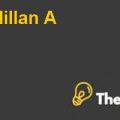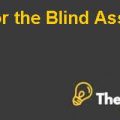
Soloman.v. Soloman Case Solution
Overview
It is expected that Salomon’s caseis considered as a key for the companies which are operating in modern environment and under the modern company law. Salomon is following the principles which enable the company to maintain its position on the company’s law. The practicing of such rigid applications raises certain issues such as social, ethical and economic issues as the risk related to these factors has not been addressed in the principles which Salomon is currently practicing which also influence the corporate groups regarding structuring themselves in order to limit the legal liabilities. It is expected that such issues involve allocation of risk and these issues should be dealt by tort law. (Professional, 2016)
Aron Soloman was a leather merchant who was doing his business in leather boots’ segment successfully. In addition, he ran his business as a wholly owned organization i.e. sole proprietorship. Afterwards, his sons showed interest in his business and therefore, he decided to make a public limited company in 1892. The company which he launched was given a name of Solomon & co LTD.
At the time when the company was initially launched,there were legal considerations that if a company becomes limited, then it should have at least 7 initial investors/shareholders. As a result, Mr. Solomon became the director of the company and owned 20,001 shares of the company whereas, the remaining 20,006 out of 20,007 shares were distributed individually among his wife, daughter and four sons. Furthermore, Mr. Solomon sold his company in almost 39000 pounds of which he received 10000 as a debt. Finally, he decided to be the principle shareholder and principle creditor.
Later on, the company was asked by Mr. Solomon to issue a debenture of 10000 pounds to him. However, the business was facing a downturn and was not able to give interest to Mr. Solomon. Even his wife decided to invest however,the company was still unable to give interest to Mr. Solomon. As a solution, Mr. Solomon transferred the debenture to one B, but the company was still unable to do so however, Mr. B was an independent and secured creditor. Mr. B held the right to sell the property as a secured creditor to cover the amount of debt from the company. Therefore, B called the receiver and sold the easiest part of the company which was the Solomon’s factory. However, this move led the business towards a dead end. Now the debt which was left comprised of the payments of suppliers and general creditors. The last option which the company had was to sell the remaining assets and to pay the remaining debts.
High Court
The creditor sued Solomon and sons and the argument which was made by them has been discussed earlier. However, the Judge, Vaughan Williams J, accepted this argument and said that Mr. Solomon had created the company as a single owner and then transferred this business to Prima Facea and became the principle creditor and shareholder. Therefore, Mr. Solomon was liable to pay debts for unsecured creditors. (Teacher, 2016)
The Appeal:
Later on, Mr. Solomon appealed in court that the liquidation process was wrong and the company should not be liquidated. However, the appeal had also went against him as the court rejected his appeal and said that he was wholly responsible for the unsecured debts. Nowadays, the company is known as a myth in the corporate sector of Ireland..................
This is just a sample partial case solution. Please place the order on the website to order your own originally done case solution.












